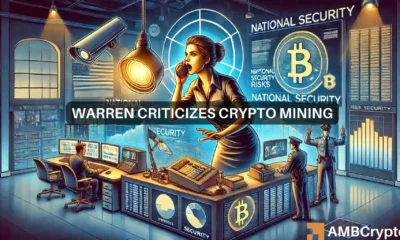Web3 and the future of Bets.io

The concept of Web3 has been rapidly gaining traction across various industries, presenting itself as the next frontier of innovation. However, many industry experts remain dubious about its potential impact. Will it merely result in superficial changes to existing products, or is it poised to revolutionize the future truly?
But first, let’s take a quick look back at the evolution of the Internet to ensure we’re all on the same page.
Brief History of the Web
The idea of creating a decentralized network for global information sharing was conceived over three decades ago, giving birth to Web 1.0, a rudimentary read-only network that existed from 1990 to 2004. However, it was characterized by static websites, corporate dominance, and minimal user interaction.
Web 2.0, which emerged in 2004 and continues to define the current Internet landscape, aimed to address the shortcomings of its predecessor. It facilitated user-generated content and interactive platforms, laying the foundation for social media and a more dynamic online experience. However, users were still unable to claim ownership or monetize the content they created.
Web 3.0, popularized by Ethereum, entered the industry in 2014 as a response to the growing concerns of crypto users regarding data privacy and ownership. This new paradigm seeks to deliver a personalized, secure, and transparent user experience focusing on rapid, human-like information processing. It aims to empower individuals by granting them more control over their data and interactions online.
Web3 Overview
Web3 is a decentralized network that aims to revolutionize how the Internet operates, giving users more control and ownership over their content. Unlike the centralized Web, Web3 is managed and developed by its users, introducing a read-write-own system that prioritizes decentralization. This new version of the Internet is based on technologies such as crypto coins, blockchain, and NFTs, empowering users with ownership rights.
Important Aspects of Web3
Web 3.0 offers unique features that set it apart from its predecessors and make it appealing to innovative individuals and companies seeking cutting-edge solutions:
- AI and Machine Learning: Data is personalized to provide users with relevant, accurate, and unbiased information.
- Semantic Web: Intelligent systems interpret emotions and messages, converting them into data for improved communication.
- Decentralized Data Storage: Information is stored in various locations globally, ensuring accessibility and security.
- Enhanced Connectivity: Users can access information across a wide range of devices, promoting seamless connectivity.
- Trustless Security: Direct interactions are facilitated without intermediaries, enhancing trust and security.
- 3D Graphics: Web3 offers a visually immersive experience with three-dimensional graphics in games, content, and websites.
Web3 Projects VS Ecosystems
In Web3, the available functionalities differ between individual projects and broader ecosystems. While buying tokens and NFTs are the essential advantages of Web3 projects, the options are limited once these sell out. In contrast, Web3 ecosystems offer a wide range of interconnected features, products, and services, maximizing user benefits, profits, and overall experience. Bets.io is an example of a Web 3.0 ecosystem, providing members with numerous advantages we will explore in more detail later on.
Reasons to Transition to Web3 Technology
- Emphasis on Decentralization: Web3 technology distributes ownership of the platform and content among the creators and token holders, ensuring a more democratic and fair system.
- Inclusivity: Web3 provides all users equal access without barriers, promoting a more inclusive and diverse online community.
- Native Payment Systems: Utilizing cryptocurrencies, Web3 enables users to make online transactions without traditional banking systems, leading to faster and more secure payment processes.
- Enhanced Trust: With Web3, there are no trust issues as the network operates on precise mechanics rather than relying on third parties for validation, ensuring user data privacy and security.
- Permanent Ownership: Through NFTs, users have full ownership of their digital assets, allowing them to trade or sell them without fear of losing their value, unlike in Web 2.0 systems.
- Blockchain Data Storage: Web3 technology stores user information on a blockchain, enabling seamless transitions to other platforms without losing their reputation or data.
- Collective Influence: Users can participate in decentralized autonomous organizations (DAOs) by holding tokens, giving them a voice in shaping the future of the network.
- Secure Digital Identity: Every user in Web3 is assigned an Ethereum address, providing a single login across all digital platforms for a more secure and personalized online experience.
In essence, Web3 revolutionizes the current Internet landscape by prioritizing security, transparency, and content ownership, making it a compelling choice for modern users.
Shortcomings of Web3
Despite the promise of a revolutionary browsing experience with limitless potential for individuals and businesses, Web3 still faces some challenges that hinder its widespread adoption:
- Steep Learning Curve: The complex interfaces, technical documentation, and fundamental differences between Web3 and its predecessors create a complex user experience, particularly for those who are accustomed to traditional browsing methods or who lack technical expertise. Users are required to invest time and effort in understanding new concepts and technologies.
- High Transaction Costs: While Web3 itself is cost-free, transactions such as Mint Ethereum NFTs involve substantial fees. This can pose a barrier for users in financially disadvantaged regions, limiting their ability to utilize this innovative network’s capabilities.
Industry Reaction to Web3
The recent authorization of 11 Bitcoin exchange-traded funds by the Securities and Exchange Commission in January 2024 has sparked various opinions within the crypto industry regarding the impact on tradable crypto assets. Of particular concern is the potential for BlackRock to become a major Bitcoin holder due to these ETFs.
Evgeniy Babitsyn, CMO of Bets.io and a crypto and Web3 expert has weighed in on the matter, highlighting the advantages and disadvantages of BTC ETFs. He spotlighted that the authorization will potentially provide retail investors increased access to the crypto market through traditional financial instruments. However, he admits that the institutional adoption of BTC through ETFs contradicts its original purpose as an alternative to conventional financial systems.
Speaking about Web3, recent data reveals that over 18,000 developers contribute code to open-source Web3 extensions each month. However, according to Babitsyn, while there is significant developer interest in Web3, official Web3 apps or games have yet to be developed. Additionally, there is a lack of awareness about the blockchains used in popular casino games within the Web3 space.
Babitsyn also emphasizes the need for caution in the development and implementation of Web3 products, particularly within the online casino industry. Drawing parallels to the potential negative effects of over-reliance on VR, such as with the recent Apple Vision Pro, he emphasizes the importance of responsible gaming practices and limiting user engagement levels in Web3 releases to ensure a balanced gaming experience.
In conclusion, many unanswered questions and challenges still need to be addressed before Web3 can be fully utilized. Without careful consideration and implementation, companies are likely to produce superficial products that lack genuine value for customers.
Despite the hurdles, Babitsyn remains optimistic about the future of BTC, cryptocurrencies, and Web3 in 2024, affirming that it will be a significant year for these technologies, and Bets.io stands ready to embrace it.
About Bets.io
Founded in 2021, Bets.io has quickly become an acclaimed online gambling platform and a frontrunner in the cryptocurrency iGaming industry. With partnerships with over 60 software providers and a vast library of over 10,000 games enjoyed worldwide, Bets.io has garnered prestigious accolades such as Best Crypto Casino 2024 (SiGMA Eurasia), Best Crypto Casino 2023 (SiGMA Europe), and Rising Star Operator 2022 (SiGMA Europe) within just a few years of its inception.
At present, Bets.io boasts its own sportsbook and affiliate program while also forging a path toward Web3 as an integrated ecosystem. This endeavor will see the fusion of all Bets.io tokens, NFTs, loot boxes, blockchain games, and additional features and functionalities, enabling players to seamlessly engage in buying, trading, selling, or wagering on these assets, withdrawing their values, and even exchanging them for physical items from partner entities.
In essence, the Bets.io Web3 ecosystem stands as a groundbreaking offering poised to redefine the landscape of iGaming in the future, with Bets.io players pioneering beneficiaries of this unprecedented gambling experience.






